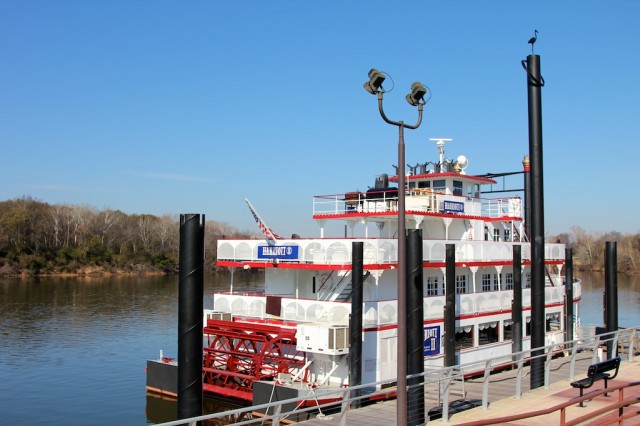
Constantino Diaz-Duran is a fellow at the Center for Social Cohesion at Arizona State University. He is chronicling his walk from New York to Los Angeles to celebrate his eligibility for American citizenship. Follow Constantino’s progress.
I took a short trip to Montgomery a couple of weeks ago. I wanted to see the city that was both the first capital of the Confederacy and arguably the birthplace of the Civil Rights Movement. I wanted to pay homage to one of my heroes, Rosa Parks, and walk down the streets where she pronounced the “no” heard around the world.
Montgomery is an interesting city. Its economy seems to have been hit hard, and you can see large, abandoned buildings, including a mall that I’m told used to be very popular. On the other hand, it’s being revitalized. My friend Tim took me downtown, where there are several new restaurants, a great new ballpark, and a charming promenade along the Alabama River.
One thing I have come to love about the South is that here you find complete integration of history and daily life. There’s no pretending down here. Past and present collide everywhere, and ghosts walk hand in hand with reformers. Did you know, for example, that Parks boarded the bus that made her famous almost directly across the street from where the telegram was sent authorizing the bombardment of Fort Sumter? Or that her bus ride must have taken her right by Court Square, which was once the site of the city’s slave market?

If you go to a game at Riverwalk Stadium, home of the Montgomery Biscuits, you’ll find yourself at the site of a former Confederate military prison. And if you walk just one mile toward the Alabama State Capitol, you’ll go right past Dexter Avenue Baptist Church, where Rev. Martin Luther King got his start. It was in the basement of that church that people met to organize the Montgomery Bus Boycott following Parks’s arrest.
As you walk through the doors at the State Capitol you will be taken by the beauty of the twin cantilevered staircases that rise to the top. The structures spiral up towards large chandeliers, and seem to float in the air, with no central support. They are the brainchild of a talented, yet somewhat unknown architect by the name of Horace King. He was born a slave in South Carolina in 1807, but his genius for bridge-building helped him rise to prominence across the Deep South. He purchased his freedom the year before he turned 40, and following the Civil War, at age 61, he was elected to the Alabama House of Representatives.
Southerners don’t dwell on the past, but they also don’t pretend it’s not there. Bless your heart if you think people here are naive or ill-informed.
Be a part of Constantino’s journey.
Follow Constantino on Facebook and Twitter.
See Constantino’s entire route.
*Photo courtesy of Constantino Diaz-Duran.




Send A Letter To the Editors